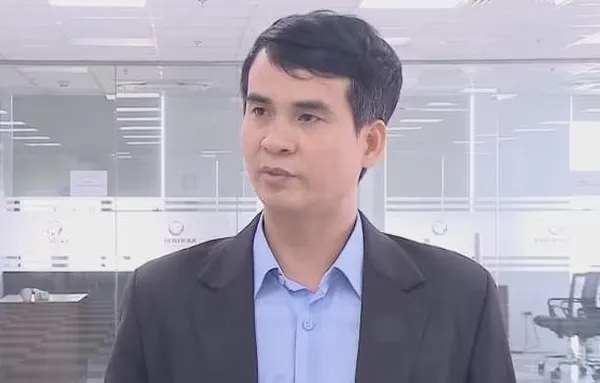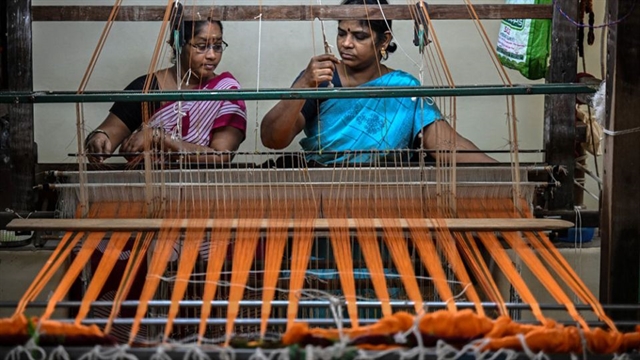 Talking Shop
Talking Shop

 |
| Deputy Governor of the State Bank of Vietnam Phạm Thanh Hà |
In the remaining months of 2023, monetary policy management is forecast to continue facing many challenges, as both the world and domestic economies are still experiencing complicated developments.
The State Bank of Vietnam (SBV) continues to closely monitor economic and monetary developments at home and abroad in order to proactively and flexibly use monetary policy tools to control inflation and support economic growth. Deputy Governor of the State Bank of Vietnam, Phạm Thanh Hà, spoke with the media about the management of monetary policy.
How have external difficulties and challenges, as well as within the country, affected monetary policy management in the first five months of the year? What solutions has the central bank implemented to ease the pressure?
In the first months of 2023, many countries continued to face the risk of economic recession and high inflation. The trend of monetary tightening is inevitable due to the high inflation.
Specifically, the Fed raised interest rates with the fastest frequency in its history, 10 times in a row, increasing 5 per cent within 14 months. The decline in global trade as well as the crisis at some banks in the US and Europe continued to pose challenges for monetary policy management around the world.
The domestic economy has also been facing many difficulties. Businesses withdrawing from the market are increasing.
According to General Statistics Office’s figures, in the first four months of 2023, the number of enterprises withdrawing from the market was 77,000, up 25.1 per cent over the same period last year. Business conditions continued to narrow as the Purchasing Managers' Index (PMI) of Việt Nam's manufacturing industry dropped again from 47.7 in March to 46.7 in April, marking the fifth month below the 50 mark in the last six months.
In the context of the complicated and unpredictable international environment, Việt Nam still faces many internal difficulties, posing many challenges for the implementation of monetary policies. However, under the close direction of the Government and Prime Minister Phạm Minh Chính, the banking industry has been proactively, flexibly, and quickly adapted to the situation.
Specifically, the SBV flexibly implements open market operations to stabilise the money market. The central bank maintained the offers to buy valuable papers with volumes and terms in line with the objectives of monetary policy management, ensuring liquidity for credit institutions.
Simultaneously, the SBV has reduced the operating interest rates three times to remove difficulties for the economy, businesses and people.
On the basis of the economic growth target of about 6.5 per cent in 2023 and inflation of 4.5 per cent set by the National Assembly and the Government, the SBV targeted the credit growth in 2023 of about 14-15 per cent and could be adjusted in accordance with developments and actual situations, contributing to stabilising the macro-economy and supporting reasonable economic growth.
The SBV controls the growth of credit volume and structure reasonably so as to both meet the credit needs of the economy and to contribute to controlling inflation and supporting economic growth. The central bank also asks credit institutions to increase credit throughout the year at a reasonable rate, directing credit to production and business fields, priority sectors and economic growth drivers according to the Government's guidelines; ensure safe and effective credit activities, create favourable conditions for businesses and people to access bank capital.
Some experts have proposed a shift from a tight monetary policy to cautious easing, supporting growth for a multi-target policy. What is the central bank's view on this?
As I mentioned before, Việt Nam is a small and open economy, facing many internal difficulties and challenges. In the context of the complicated and unpredictable international environment, we have to manage the interest rate, exchange rate and credit tools to harmonise many conflicting goals such as both supporting the economic recovery after the pandemic and controlling inflation despite high global prices and persistent inflation; ensuring the value of Vietnamese đồng in the context of complicated fluctuations of many currencies in the world while still having to reduce interest rates; ensuring the safety of the banking system and the credit needs for the economy, continuing to remove difficulties for borrowers.
The economy’s difficulties could be divided into those of enterprises and banks. If banks support businesses at an acceptable level, the economy will get better. If banks postpone, delay, or loosen credit conditions, the difficulties will shift to banks, posing a risk of system insecurity. The difficult problem is that the SBV has to find a harmonious solution that still supports the economy and ensures the banking system's safety.
In particular, “trial and error” are not allowed in operating monetary policy. Therefore, it is necessary to balance the goals of stabilising the macro-economy, controlling inflation, stabilising the money market, and aiming at the common long-term goal of stabilising the banking system.
Could you share the central bank's management strategy for the remainder of the year? How will it ensure that the monetary policy remains robust against potential "headwinds" in 2023, while continuing to support economic growth and macro-economic stability?
The world economy is expected to go through many uncertainties. Although inflation has shown signs of passing the peak, it will continue to remain at a high level in many countries. Many central banks still maintain high interest rates.
Meanwhile, the domestic economic growth is also facing risks when the world demand declines, negatively affecting the manufacturing and processing industries. The central bank continues to closely monitor economic and monetary developments at home and abroad to firmly, proactively and flexibly manage monetary policy tools to control inflation and support economic growth, stabilise the currency and foreign exchange markets.
Specifically, SBV will operate an open market flexibly, proactively, and ready to support liquidity for the credit institution system. SBV will refinance credit institutions to support liquidity, support the process of restructuring credit institutions and dealing with bad debts; operating the compulsory reserve instrument in line with economic and monetary developments and other monetary policy management measures.
The central bank would operate interest rates in line with macro balance and monetary policy objectives; continue to encourage credit institutions to reduce costs and lower lending interest rates to support enterprises.
We would manage the exchange rate in line with market conditions, intervene in the market when necessary, coordinate and synchronise monetary measures and tools to stabilise the foreign currency market.
Lastly, the SBV would continue to manage credit growth in line with the oriented target of 14-15 per cent for the whole of 2023; ask credit institutions to lend into production and business sectors, priority areas and economic growth drivers according to the Government's policy, strictly control credit in potentially risky areas; create favourable conditions for businesses and people to access bank loans. — VNS




